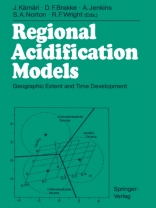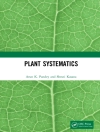In order to provide meaningful information for evaluating environmental consequences of alternative control strategies of air pollutant emissions, scientists have recently initiated numerous studies aiming at collecting and making use of regional data. New kinds of mathematical models have been developed that no longer are calibrated just for individual stands or catchments but can be applied on a large regional scale. Such regional models and data were reviewed at a meeting" Models to describe the geographic extent and time evolution of acidification and air pollution damage", organized by the Finnjsh Research Project on Acidification (HAPRO), and held in Aulanko, Hiimeenlinna, Finland, July 5-8, 1988. This volume is based on the outcome of that meeting. The chapters of the volume are written by leading scientists in the field. The main objective of this volume is to discuss the potential of regional models to analyze the geographic extent of acidification as well as the environmental damage and the time evolution of:the responses of the environment. First, in Part I of the volume, sensitivity distributions of ecosystems, forest soils and surface waters are described. The focus of interest is therefore extended from the most sensitive ecosystems to sensitive and moderately sensitive parts of the environment. When formulating national and interna- tional targets, it is of crucial importance to know the whole distribution of critical loads within the area, and not only the level the most sensitive ecosystem can tolerate.
David F. Brakke & Alan Jenkins
Regional Acidification Models [PDF ebook]
Geographic Extent and Time Development
Regional Acidification Models [PDF ebook]
Geographic Extent and Time Development
Buy this ebook and get 1 more FREE!
Language English ● Format PDF ● ISBN 9783642839948 ● Editor David F. Brakke & Alan Jenkins ● Publisher Springer Berlin Heidelberg ● Published 2012 ● Downloadable 3 times ● Currency EUR ● ID 5782077 ● Copy protection Adobe DRM
Requires a DRM capable ebook reader












